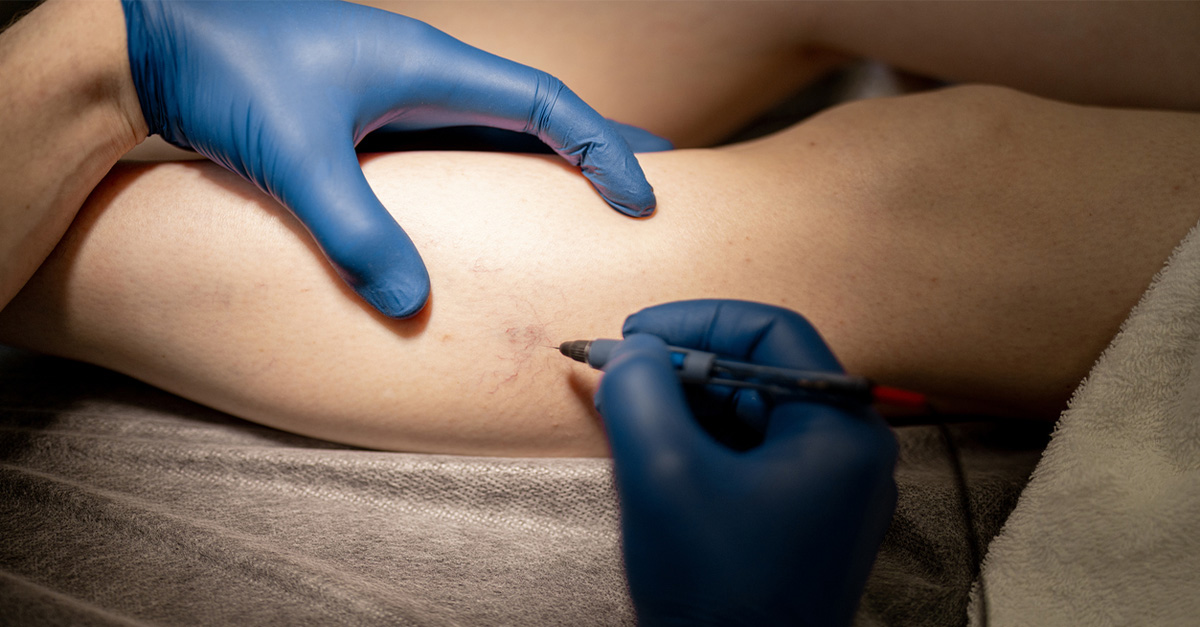If you’ve been dealing with frustrating varicose or spider veins, you may be looking into options for treatment. Depending on your specific condition, you could be a good candidate for sclerotherapy, an innovative treatment that causes veins to shrink. While it can be done any time of year, cooler seasons are ideal for this procedure.
Here’s a closer look at what sclerotherapy entails and why you might want to consider it as cooler weather approaches.
What Are Varicose & Spider Veins?
Both varicose and spider veins are damaged and discolored, but these two conditions have important differences.
- Varicose veins are often twisted and enlarged, and may appear rope-like.
- Spider veins are smaller and closer to the skin’s surface.
While varicose veins can be blue, red, or skin-colored, spider veins are often red. Varicose veins typically develop on your legs, whereas spider veins can appear on either your legs or face.
Varicose and spider veins are more common in women and older adults. Risk factors also include pregnancy, obesity, menopause, and long periods of sitting and standing.
No matter their cause, it’s understandable that you might want your spider or varicose veins gone. Many people who have varicose veins experience achiness and other discomfort, while both spider and varicose veins can be a cosmetic concern. In the case of varicose veins, conservative therapies such as elevation, exercise, and compression stockings may be recommended before surgical interventions are pursued. But if you’ve tried other methods and are still experiencing symptoms or are unhappy with the appearance of your veins, now is an ideal time to begin sclerotherapy.
What Is Sclerotherapy?
Sclerotherapy is a process in which a chemical solution is injected into the varicose or spider vein. The solution irritates the vessel and causes it to swell, which eventually results in a shrinkage and collapse of the vessel altogether. Your body then naturally channels blood through other, healthier surrounding veins. Oftentimes, several treatments are needed to collapse the affected veins completely, especially if multiple veins are being treated.
“While sclerotherapy is considered a minimally invasive procedure with temporary discomfort, bruising and discoloration can appear at injection sites,” says Emily Lagergren, MD, RPVI. Furthermore, while spider and small varicose veins may respond to treatment in as little as three weeks, larger veins can take several months to vanish. During the recovery period, you may be encouraged to wear compression stockings to promote healing and to prevent additional varicose veins from forming. It’s also recommended that you avoid sun exposure, as UV rays could increase inflammation and impede healing.
For these reasons, it makes sense to plan sclerotherapy during a time when you’ll be more likely to keep covered with longer layers, or hunker warmly indoors. Fall is the perfect time of year to start, since it’s likely it will still be winter by the time you’ve healed completely. By the time warmer weather returns, you’ll be able to wear shorts and swimsuits with comfort and confidence.
Schedule a Sclerotherapy Consultation With Vascular Surgical Associates
If you’re considering treatment for your varicose or spider veins, turn to Vascular Surgical Associates. Our doctors excel in spider and varicose vein removal techniques, including sclerotherapy. Schedule a consultation using our online appointment request form or by calling 770-423-0595.





